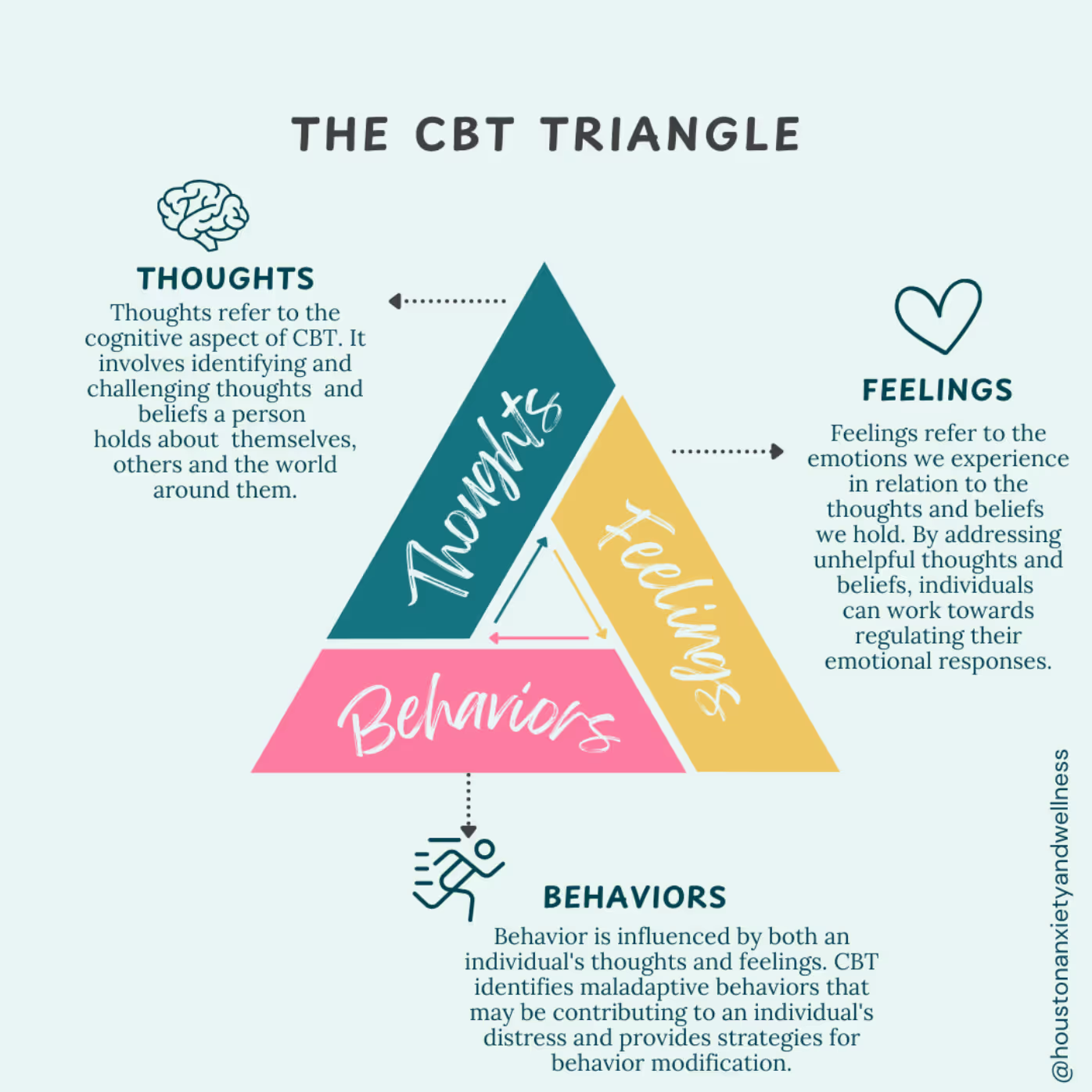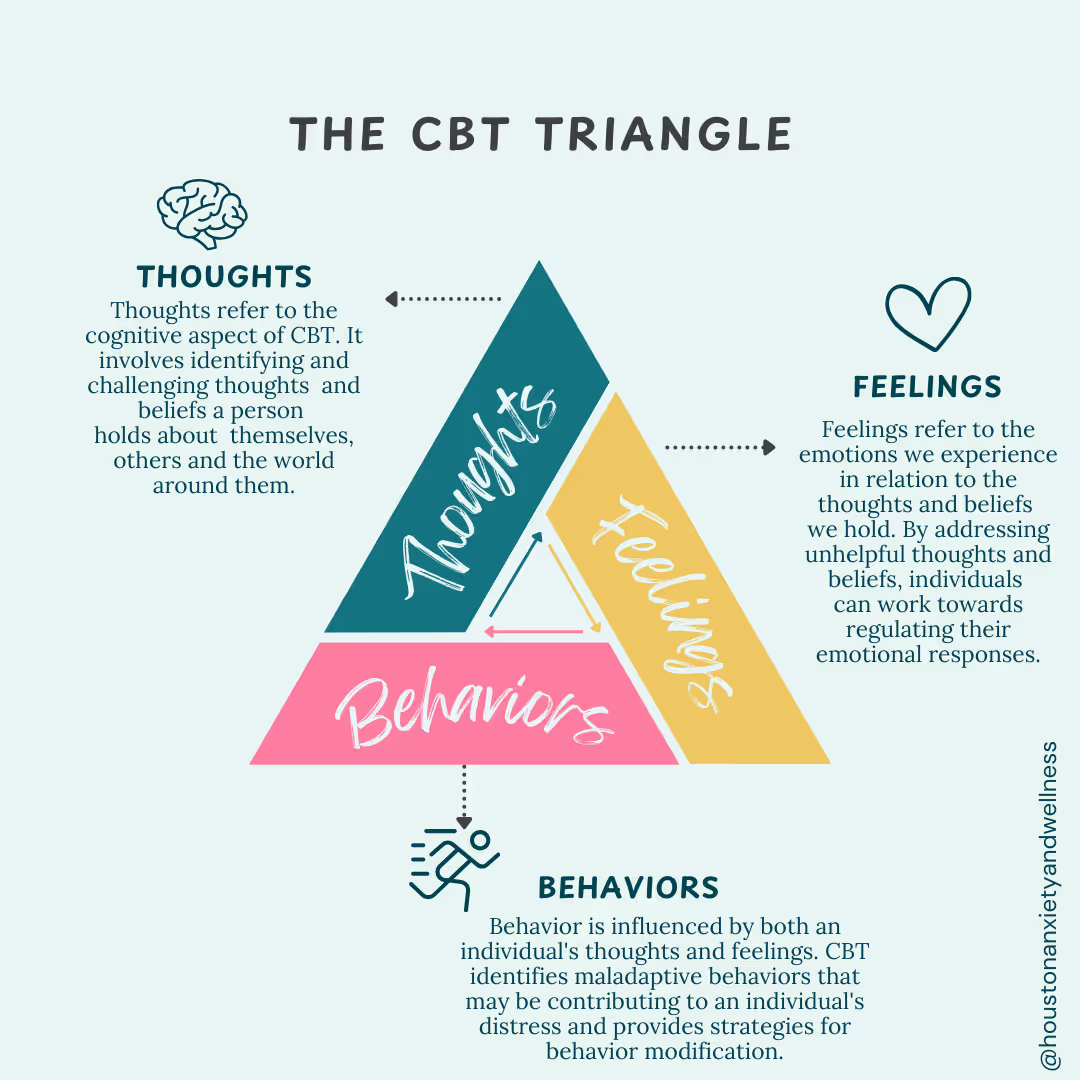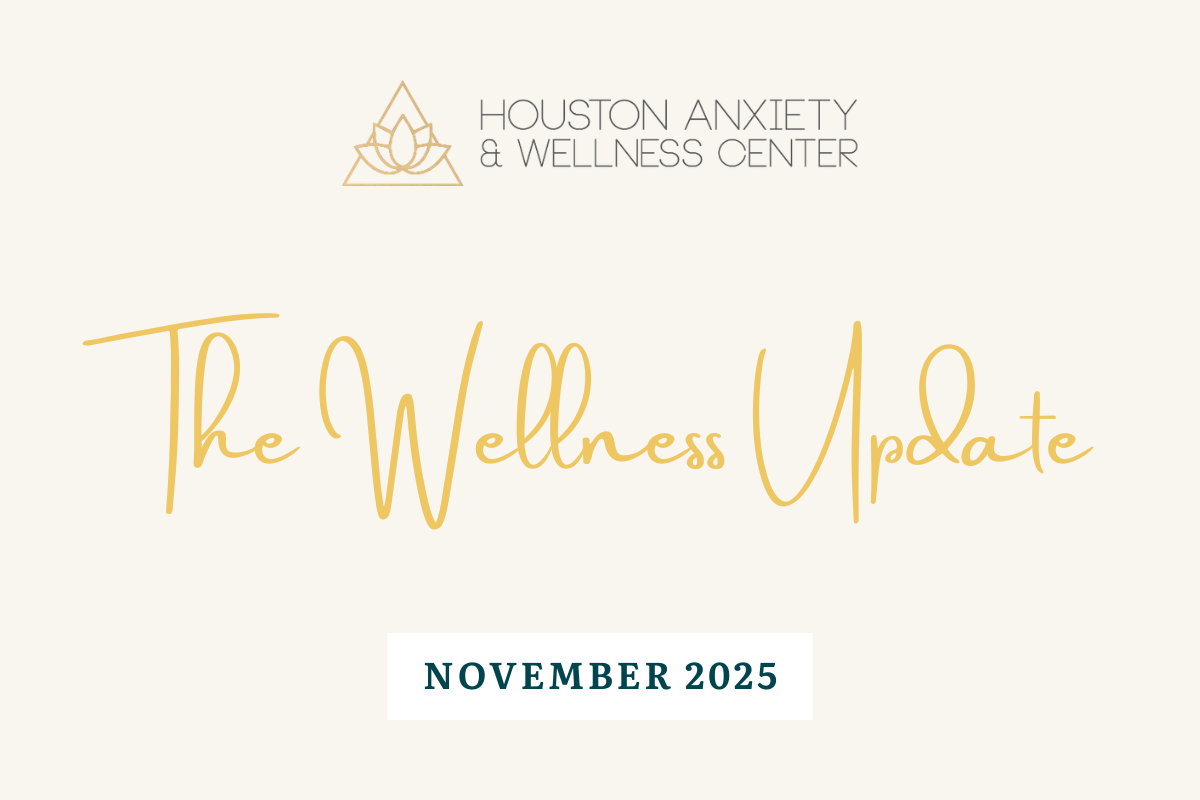Making Therapy Fun, Engaging, and Evidence-Based for Children and Adolescents
Learn more about how our unique approach to therapy makes emotional growth safe, fun, and highly effective for your child.

Our thoughts (or how we perceive or interpret a situation) often affect how we feel about our situation and in turn affect what we do or how our bodies react.

For example, imagine you are getting ready for a big presentation at work or school. You might think, “I am definitely going to mess this up and people are going to think I am incompetent.” As a result you likely feel nervous, a bit worried, anxious, maybe even sad thinking that you are about to blow an opportunity or fail a grade. Your stomach might get queasy, your heart may start to pound, and your mouth might start to feel really dry. You might choose to call in sick to work or school or avoid working on the presentation until the very last minute.
In this example, it’s clear that the thought, “I am going to mess up” has a significant impact → creating feelings of worry and sadness and leading to procrastination, avoidance, and physical symptoms of stress.
In CBT therapy, your therapist will help you challenge your negative automatic thought that you are “going to mess up” or that others will think of you as “incompetent.” Your CBT therapist will help you first identify your negative thoughts, notice when these types of thoughts pop up, and then use real evidence to help you “fact check” your thoughts. Questions such as “What else could happen?” or “What else could be true?” will help you start to see all the possibilities, instead of just the negative ones. You will learn real life skills to help you become a realistic thinker (not an overly optimistic Pollyanna). We can confidently cope with and work through hard things that are realistic more so than the catastrophic stories we tell ourselves.
Your CBT therapist will also help you to change your behaviors. Instead of avoiding or procrastinating, your therapist will help you break tasks up into smaller pieces, creating a plan to help you feel more comfortable doing the scary thing. For example, maybe you practice your presentation in front of the mirror, then in front of your partner or parent, then maybe you record yourself presenting and re-watch it or share it with a sibling or close friend. The more familiar you become with the discomfort… the less uncomfortable the task. In addition to walking alongside you while you face your fears, your CBT therapist will also help you learn ways to calm and relax your body. You might learn how to properly engage in diaphragmatic breathing, mindfulness, relaxation, and visualizations.
Cognitive Behavioral Therapy is our first line of defense at Houston Anxiety and Wellness Center. Because we believe in individualizing treatment for each person’s unique needs, therapists at our practice also bring in aspects of other modalities to help support our clients. CBT has been proven to be an effective treatment for depression, anxiety disorders, phobias, post-traumatic stress disorder, insomnia, and eating disorders. CBT is also effective for learning new skills for navigating difficult relationships, building self-confidence, and increasing overall contentment, despite circumstances.
Privacy Notice: By providing your email, you understand this resource is educational only and doesn't establish a therapeutic relationship. We use Flodesk (non-HIPAA compliant) to deliver this content and general practice updates. Your email will not be shared with third parties.
Our thoughts (or how we perceive or interpret a situation) often affect how we feel about our situation and in turn affect what we do or how our bodies react.

For example, imagine you are getting ready for a big presentation at work or school. You might think, “I am definitely going to mess this up and people are going to think I am incompetent.” As a result you likely feel nervous, a bit worried, anxious, maybe even sad thinking that you are about to blow an opportunity or fail a grade. Your stomach might get queasy, your heart may start to pound, and your mouth might start to feel really dry. You might choose to call in sick to work or school or avoid working on the presentation until the very last minute.
In this example, it’s clear that the thought, “I am going to mess up” has a significant impact → creating feelings of worry and sadness and leading to procrastination, avoidance, and physical symptoms of stress.
In CBT therapy, your therapist will help you challenge your negative automatic thought that you are “going to mess up” or that others will think of you as “incompetent.” Your CBT therapist will help you first identify your negative thoughts, notice when these types of thoughts pop up, and then use real evidence to help you “fact check” your thoughts. Questions such as “What else could happen?” or “What else could be true?” will help you start to see all the possibilities, instead of just the negative ones. You will learn real life skills to help you become a realistic thinker (not an overly optimistic Pollyanna). We can confidently cope with and work through hard things that are realistic more so than the catastrophic stories we tell ourselves.
Your CBT therapist will also help you to change your behaviors. Instead of avoiding or procrastinating, your therapist will help you break tasks up into smaller pieces, creating a plan to help you feel more comfortable doing the scary thing. For example, maybe you practice your presentation in front of the mirror, then in front of your partner or parent, then maybe you record yourself presenting and re-watch it or share it with a sibling or close friend. The more familiar you become with the discomfort… the less uncomfortable the task. In addition to walking alongside you while you face your fears, your CBT therapist will also help you learn ways to calm and relax your body. You might learn how to properly engage in diaphragmatic breathing, mindfulness, relaxation, and visualizations.
Cognitive Behavioral Therapy is our first line of defense at Houston Anxiety and Wellness Center. Because we believe in individualizing treatment for each person’s unique needs, therapists at our practice also bring in aspects of other modalities to help support our clients. CBT has been proven to be an effective treatment for depression, anxiety disorders, phobias, post-traumatic stress disorder, insomnia, and eating disorders. CBT is also effective for learning new skills for navigating difficult relationships, building self-confidence, and increasing overall contentment, despite circumstances.

Learn more about how our unique approach to therapy makes emotional growth safe, fun, and highly effective for your child.

Feeling the holiday chaos creeping in? This month’s update brings easy, gentle ways to slow down, set boundaries, and enjoy what really matters.